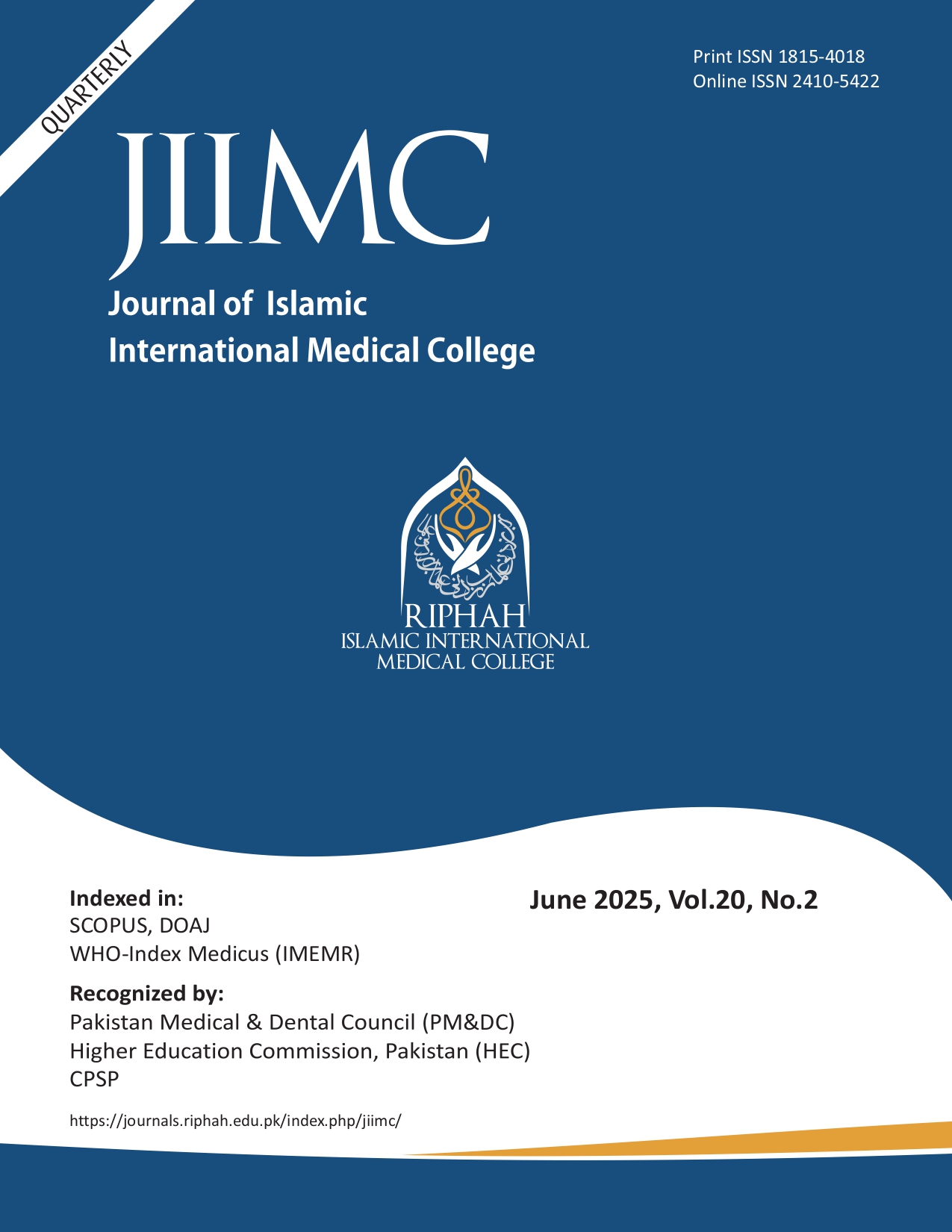Evaluating Activity and Chronicity Indices in Lupus Nephritis Using the Recent NIHModified Activity Index Scores: A Comprehensive Correlation Analysis with Renal Function
Keywords:
Activity Index, Chronicity Index, Lupus Nephritis, Serum Creatinine.Abstract
Objective: To study the correlation between activity and chronicity indices in renal biopsies and renal functions among lupus nephritis patients.
Study Design: Prospective cross-sectional study.
Place and Duration of Study: This study was carried out from October 2021 to 2022 at Department of Histopathology, Shifa International Hospital Islamabad.
Materials and Methods: Clinical data, including history, age, serum creatinine, serum and urine albumin levels, ANA and Anti Ds DNA status, were obtained from the hospital's medical electronic records. Renal biopsies for light microscopy were assessed and scored for activity index and chronicity index using the recent (2018) NIHmodified activity and chronicity index scores (Table I). Immunofluorescence slides were viewed for full house deposits of IgG, IgA, IgM, C3 and C1q as seen in lupus nephritis. Data was incorporated into data management
software, and statistical analysis was conducted using IBM SPSS version 23.0.
Results: Among the 91 renal biopsies, 12 (13.2%) were male patients and 79 (86.8%) were female patients. The mean activity index score was 6.42±3.9 (ranging from 0 to 16 out of 24), while the mean chronicity score was 2.25±2.0 (ranging from 0 to 8 out of 12). Comparisons of activity and chronicity index scores with lupus classes revealed a significant association. Mean activity scores for lupus Class 1 to 5 were 2.07±1.6, 3.40±2.3, 8.21±3.3, 3.00±2.3, and 5.00±0.5 respectively, similarly mean chronicity scores for lupus grade 1 to 5 were 0.50±0.5, 0.80±0.8, 2.75±1.9, 3.00±2.7, and 7.00±0.5 respectively. These scores were compared with lupus classes,
revealing significantly higher mean activity and chronicity index scores for higher lupus classes. A positive correlation between index scores and elevated creatinine levels (p<0.001) was observed.
Conclusion: The study concludes that NIH-modified activity index and chronicity index scores are positively associated with lupus classes and clinical parameters, including serum creatinine, albumin, and urine protein.


